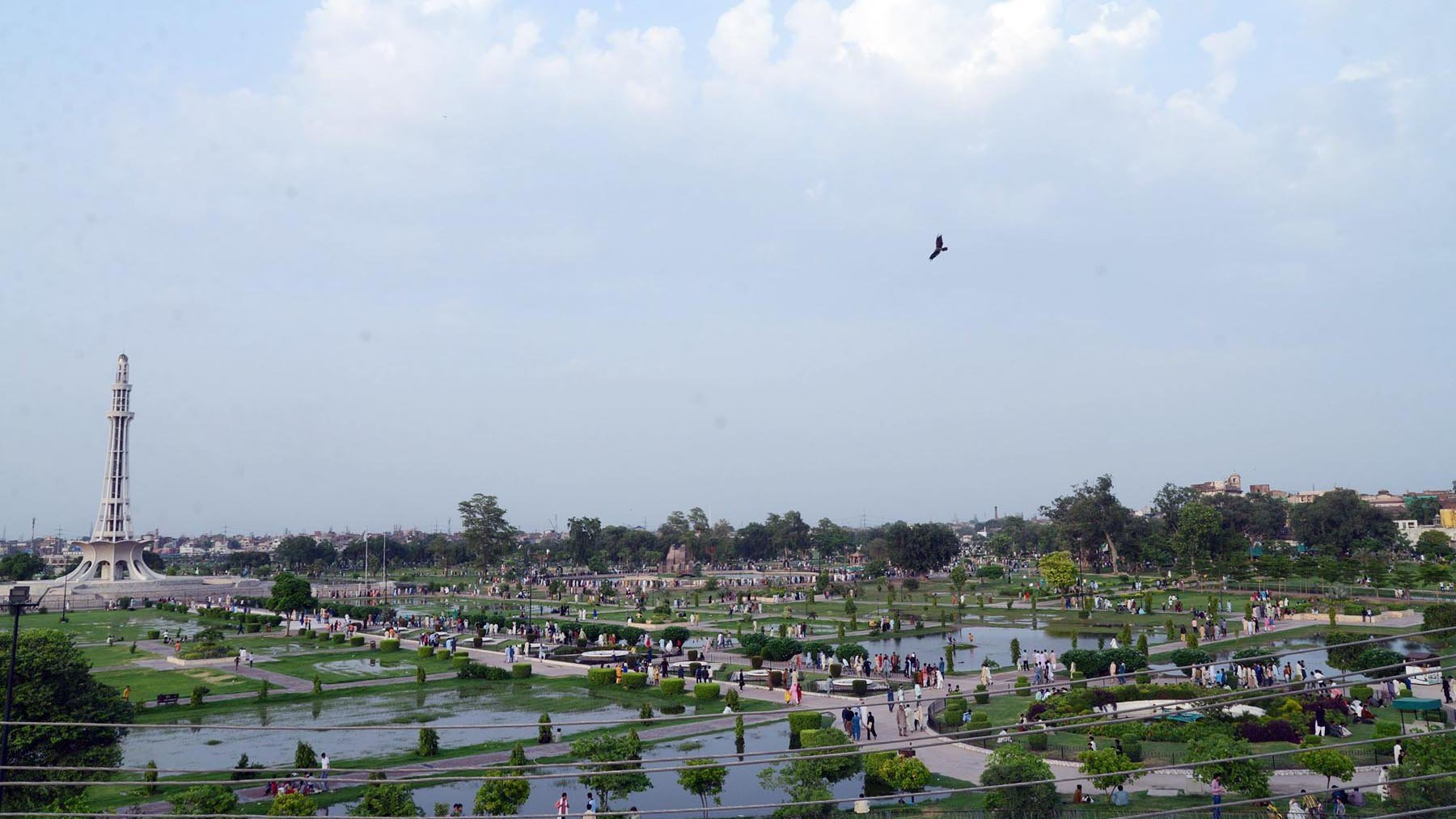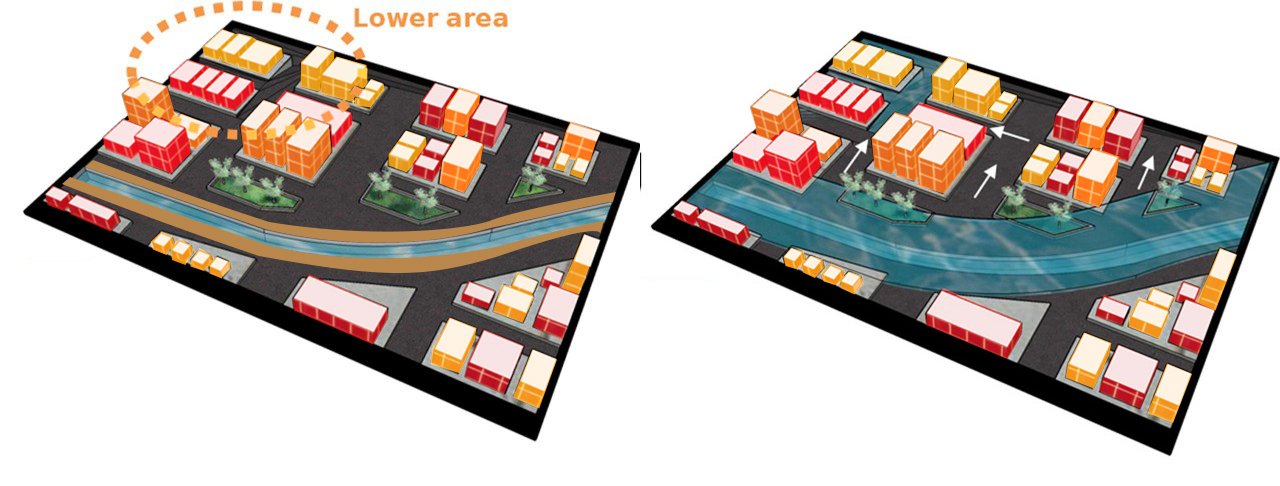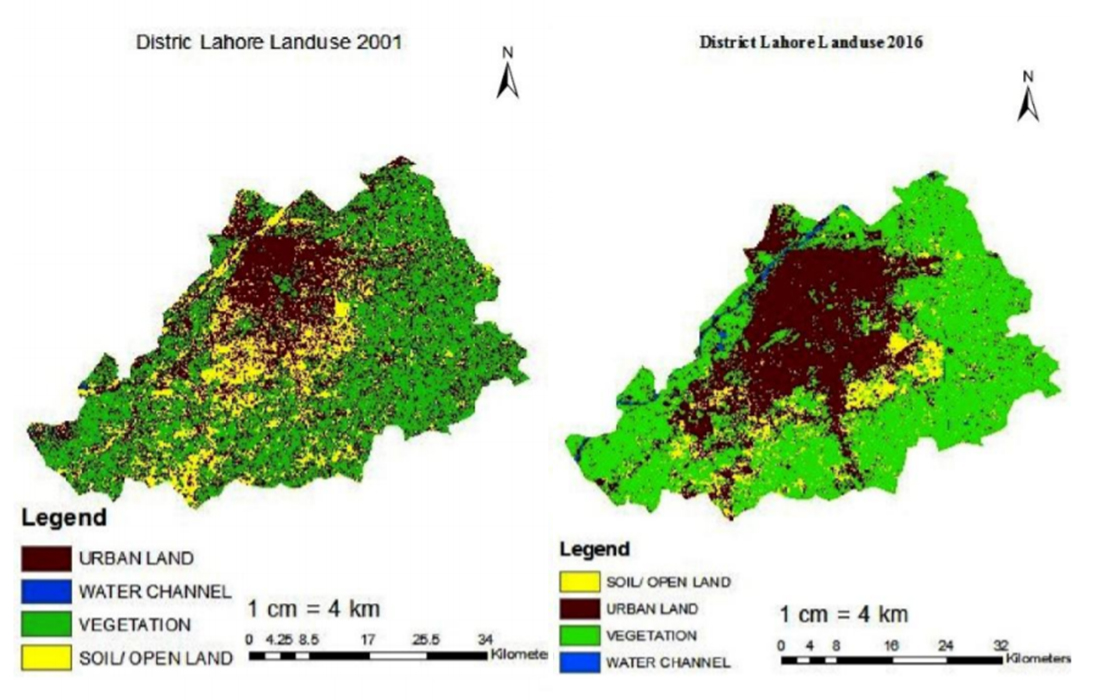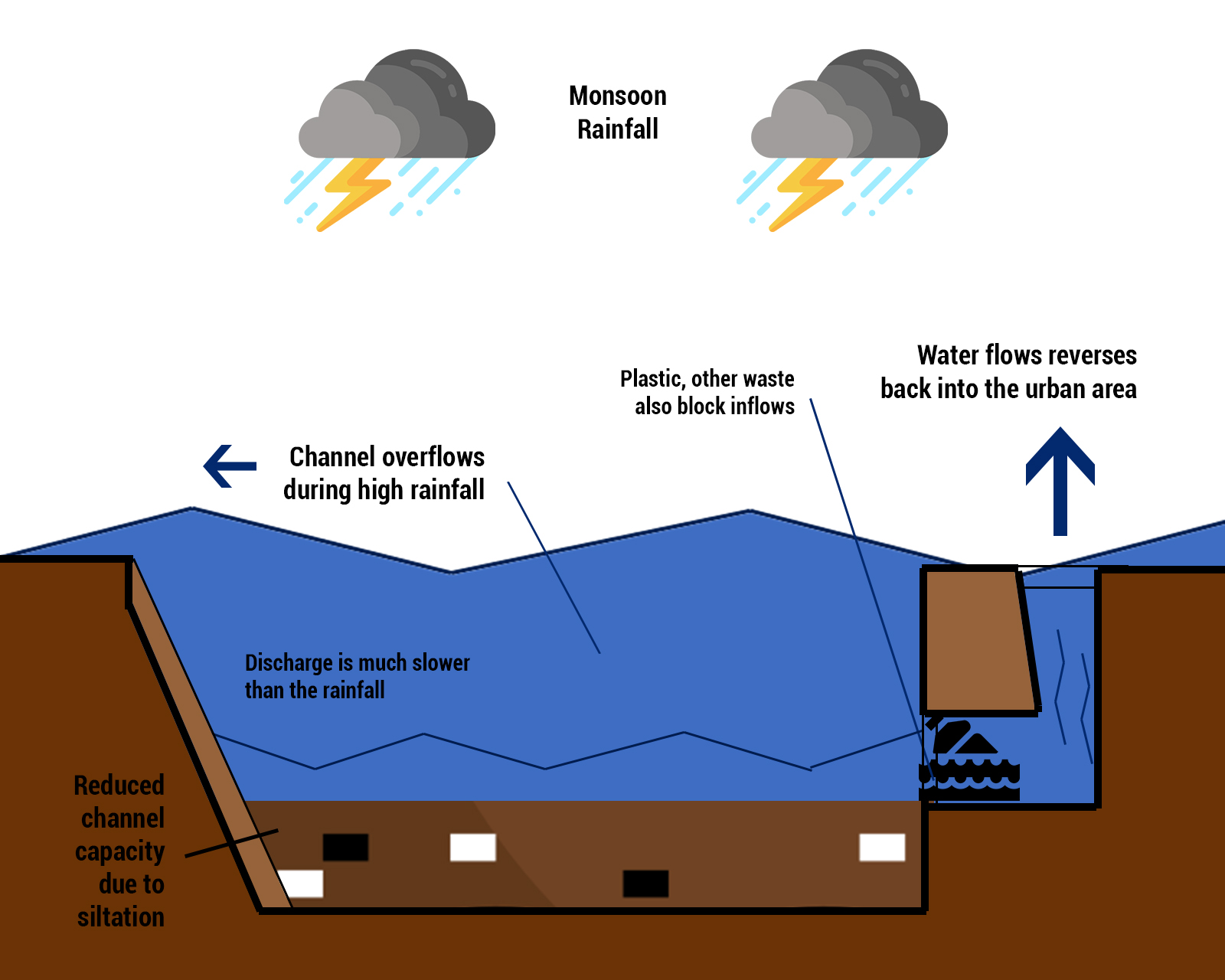“Annual cumulative precipitation (~500 mm/year) is expected to increase a bit in the future warmer period … Such a situation is indicative of an increase in the risk of urban flooding when monsoon season rainfall is concentrating on the end of the rainy season with intense events.”
Grim observations like the one above about Lahore’s changing climate, along with other urban centres, are aplenty in a special report published last year by the Global Change Impact Study Center (GCISC) of the Pakistan Meteorological Department. Researchers used a technique called Global Circulation Modelling (GCM) to predict future scenarios, based on the United Nations Framework Convention on Climate Change’s forecasts of a two-degree rise in global average temperatures.

In the 17 hour-long rain spell on July 16, Lahore’s famous Lakshmi Chowk received more than 250mm of rainfall. To put things into perspective, the average rainfall for the whole month of July (mean from 1961-1990) was 202mm. In 1996, the city received 496mm of rain in 36 hours during a monsoon rain spell, breaking all records in recent memory. The Ravi – which at the time was not hindered on the Indian side – overflowed and most of the city flooded. It was an anomaly, which has not been repeated, because the water flows massively declined in the last two decades. But Ravi does not need overflow to have Lahore flooded. A combination of above-average rainfall and ‘over-development’ has made Lahore regularly witness pluvial flooding, for which no cure or mitigation seems to have been developed.

As Lahore’s urban sprawl kept growing, the city-managers have largely failed to cater to its drainage needs. This simply means that while housing societies, concrete boulevards, flyovers, underpasses, high-rises and signal-free corridors have popped up all over the city, green spaces and the urban tree canopy has had to bear the brunt of these developments. At the same time, the capacity of Lahore’s drainage system has been declining.

Lahore is served by eight main drains: (1) Central, (2) Lower Mall, (3) Chota Ravi, (4) Alfalah, (5) Gulberg 1 & 2, (6) Edward Road, (7) Mian Mir and (8) Gulshan-i-Ravi. These are further connected to 76 tributary drains. Combined these make up a lengthy network of 180 kilometers, with a theoretical carrying capacity of nearly 6,500 cusecs. But increasing urbanization and reduction in green spaces has increased the strain on these drains.
Furthermore, Lahore’s tree cover fell by 72 per cent from 12,359 in 2007 to just 3,520 in 2015.
The eight main drains had always been vulnerable to siltation. Surface runoff deposited large amounts of sediment into these drains. A Japan International Cooperation Agency project study in 2004 revealed that nearly 400,000 cubic meters of sediment deposits had gathered in these drains, which were gradually removed by assistance from the Japanese Aid Agency to the Water and Sanitation Authority (WASA). The sediment deposits, in effect, reduce the carrying capacity of the drains, making them less and less effective in times of heavy rainfall. With reductions in green-cover and water absorption into the soil, and increased surface run-off of sediment into the drains, Lahore can no longer deal with the yearly episodes of monsoon rainfall.

While the 1996 episode was at the time seen as anomaly, above average rainfall episodes occurred in the city in 2007, 2008, 2010, 2014, 2015 and 2018. The city even had snow (read: heavy hail), signifying that these climatic events are no longer anomalies, but the new normal. Densely urbanized Localities including Walton Cantt, Lakhshmi chowk, Bhatti gate, Empress road, Cooper road and Chaburji are inundated routinely. As the researchers at GCISC had observed and predicted, cumulative rainfall during monsoon has remained in the normal range, but the intensity of single rainfall events has risen sharply.
Future-proofing Lahore will require serious changes in the city’s current urbanization trajectory, as well as capacity-building of critical agencies and departments. The problem is no longer a simple governance failure, but also a failure in proactive climate resilience.
In terms of management, the Water and Sanitation Authority (WASA) is severely underfunded and understaffed to preempt the routine occurrence of pluvial flooding. The city-managers in the last two decades, under multiple governments, have failed in both effectively using WASA and planning for the city’s future in an era of the climate crisis. Creating urban climate resilience in Lahore will also provide other major urban centres like Karachi, Multan, Faisalabad, Rawalpindi and Peshawar a blueprint for pre-empting similar episodes.
Nauman is a policy analyst and communications consultant. He tweets @thelahorewala.


